#ndn model
Explore tagged Tumblr posts
Note
i remeber following hawke few years ago cause they were native never checked their blog much then i saw that post about them being a freak from 2021 i think and hearing about them being anti black which was disappointing cause im a black native. Blocked and unfollowed them since question though? if you dont mind me asking how are they a pretendian i just remember them like reconnecting to their ojibwe side which theres nothing wrong with or some shit cant remember but since they are lying were they exposed for faking being native on here that i dont know anything about thanks!
Hi anon, i'm sorry you had to deal with that
so hawke has gone by a lot of different urls, they tend to hop blogs whenever too many people call em out on their booshit. i think i remember when i first saw them all them years ago, they would use icons with a thunderbird on them, and iirc would claim to be Cree instead of Ojibwe
here's an example of one of the last few urls they've had

here's also a Huge post about them courtesy of @neechees
#anonymous#also i heard they're a crypto zionist now sooooo#not even gonna get into their 'model minority' complex when they're not even ndn lmao
4 notes
·
View notes
Text
https://ictnews.org/news/big-pink-truck-delivers-books-love-of-native-literature

https://ictnews.org/news/big-pink-truck-delivers-books-love-of-native-literature
The truck is from the founders of the NDN Book Club, Kinsale Drake, Navajo, and Pte San Win Little Whiteman, Oglala Lakota. The club truck hit the road April 1-5. In addition to distributing books, the team handed out product donations curated by sponsor Amy Denet Deal from 4KINSHIP, a Navajo brand that uses runway fashion to fund social good projects on Navajo Nation like the Yilta Book Drop.
NDN Book Club is a nonprofit, literary organization run by and for Indigenous peoples that hosts free youth workshops, author talks, uplifts Indigenous literature, supports Indigenous booksellers, and sends out free Native books. They are supported by Native actress Amber Midthunder (“Prey”) and model activist Quannah Chasinghorse.
In 2023, they distributed more than 2,000 free books by Indigenous authors to Native youth across Turtle Island, supplied by diverse Indigenous booksellers, publishers and authors. From Muckleshoot in Washington to Piscataway lands in the Northeast, they lead workshops in classrooms, tribal libraries, tribal colleges, book festivals and museums.
#indigenous#native american#books#navajo nation#oglala lakota#indigenous people#indigenous writers#indigenous artists#good news#ndn#literature#native literature
73 notes
·
View notes
Text





NDN ICON sticker packs are available for preorder now! NDN ICON seeks to introduce people to lesser known Natives throughout history. Each person is hand picked, and researched by me, and I put effort into using traditional/decolonial names for both individuals and tribes/nations. modeled after trading cards, these sticker packs have 4 randomly selected stickers featuring NDN ICONS.
25% of proceeds go to the Urban Native Education Allience, a group local to me who seek to provide education and extra curricular opportunities to Native students in the Seattle area.
221 notes
·
View notes
Text
For those of you who don't know: many places like reserves & schools & Native communities host pow wow yearly & will pick "royalty" (usually someone dubbed a "princess" but there are other titles like "princes" & "warriors") to represent them for a year, and this royalty will be expected to attend multiple pow wows that year, to dance a lot, and be a role model. Sometimes this might also include other "duties" like giving speeches and attending school or other community events, and then crowning the new royalty the following year.
25 notes
·
View notes
Note
Sending this anon because I don't like publicly beefing with other native women. But I do think that if you're operating in native circles, you shouldn't be so quick to assume that the people disagreeing with you don't come from your own community. And so, or example, it might not be the best choice to constantly throw around crass "your mother" comebacks at every turn. Natives should be able to disagree with you and know you won't respond by escalating, attacking them or mocking them through, among other matters, sexualizing their Indigenous mothers.
These are small online spaces and behavior like this from people with larger presences can make it feel downright claustrophobic.
There's a billion other Native women for you to follow if I'm not your cup of tea, dickhead.
Natives disagree with me all the damn time. They also don't tone police me when a racist white Youtuber comes under fire.
Seriously, what do you think you're even doing here? You think I have a LARGE PRESENCE? Especially on fucking Youtube? Hell, especially within INDIAN COUNTRY? I'm not a big journalist. I'm not a Hollywood NDN. I'm not a big content creator. I've been talking shit on Tumblr and Twitter for years now. You picked a weird fucking time to single me out as the role model who needs to watch what I see before people think NDNs are bad or whatever tokenist image you think I should be.
And it's hilarious that you want to come at ME for "escalating, attacking and mocking Native women" when Native men in the industry and with bigger platforms do that exact shit on a far worse level ALL THE TIME and Native women call that shit out. Clearly you'd rather defend Jenny Nicholson/Lindsay Ellis/Contrapoints than your own alleged community.
So which is it? Are you a white kid poising as a Native to shame and silence another Native woman to defend your white fave? Or are you a bootlicking Native once again throwing a Native woman under the bus for a racist white woman? Neither are very flattering sis. Worry less about my conduct and more about yours.
10 notes
·
View notes
Text
fur, money, adventure: mechanisms of colonialism and survivance
riel ✰ | march, 2023
“Of all the things on earth, the motherland is the most important
and sacred to us because we inherited it from our ancestors,”
- Louis Riel

Fig. 1, Wilson. I. Former Jean Caron Sr. House, Batoche Saskatchewan. Image courtesy of I. Wilson and Parks Canada
I am Red River Métis, descending maternally from historic Métis families by the names of Berthelet, Caron, Ste. Germain, Larivière, Dazè, Dubois, and Boudreau; we come from the Red River Settlement in Manitoba and Batoche, Saskatchewan. My Berthelet family members were employees of the North-West Company and community leaders in the town of Pointe à Grouette, now Ste. Agathe (St. Onge). My fifth great uncle Jean Caron Sr. fought in the Battle of Duck Lake of the North-West Resistance of 1885, with his sons and under the command of Gabriel Dumont, Jean Caron Sr’s house still stands in Batoche to this day (fig. 1). I introduce myself in this way, the traditional way of the Métis to situate myself on this land and contextualise my knowledge and experiences.
My practice serves to counter the settler-colonial understanding of Métis people and our history and establish us as a people who have been practising survivance for generations. With the help of aesthetics of survivance I oppose mechanisms of colonialism; aesthetics including the Hudson’s Bay Company’s bloody legacy, the monuments and public art installed throughout Calgary, the suburban cowboys that come out of hiding in their McMansions on the outskirts of the city, riding their steel steeds, raised trucks, to the summer Stampede. The aesthetics of survivance are “[...]more than survival, more than endurance, or mere response, [...] stories of survivance are the creases of sovereignty,” (Vizenor, 15). In her 2019 book The North-West is Our Mother by Jean Teillet, the author compares the birth of the Métis Nation to human birth; messy, bloody, painful. Our history is vastly complex and controversial in the eyes of the average Canadian settler today. It is a history that makes settlers uncomfortable, confused, sometimes defensive and angry in response to lack of knowledge and this ignorance is often no fault of their own. Canada has a carefully curated canon of history that we are all spoon-fed in school until given the chance to learn the other sides of this history, to think critically and hear stories of survivance.
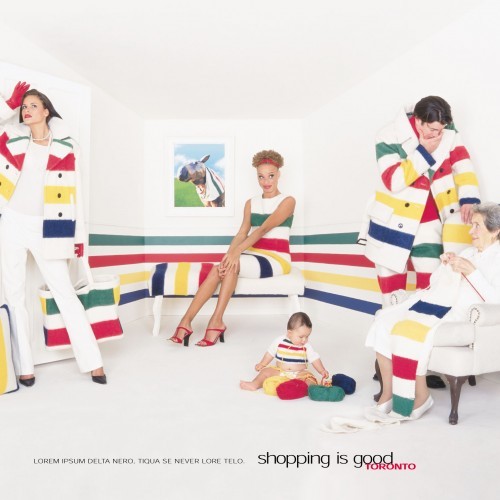
Fig. 2, The Bay “Shopping is Good” advertisement, 2000. Courtesy of the HBC History Foundation
Countering aesthetics of survivance, The Hudson’s Company has developed their own aesthetics of colonialism. “Fur! Money! Adventure! That [is] what the Hudson’s Bay Company territory had to offer Englishmen and Canadians three hundred years ago,” (Sealy, 1). From the very beginning of the point blanket, with its iconic stripes on white wool, traded for a single beaver pelt to an advertisement from the year 2000 (fig. 2). An image of a nuclear family wearing matching white outfits in a clean white room. Everything accented with green, red, yellow, and indigo stripes, down to the scarf that the grandmother is knitting, referencing the histories of trade and handmade goods long abandoned by the HBC in favour of their modern department store model and multiple aesthetic rebrands throughout the years after the industrial revolution (Toneguzzi). The advertisement simply states, “Shopping is Good, Toronto”. Pro pelle cuttem, a pelt for a skin, a skin for a skin.
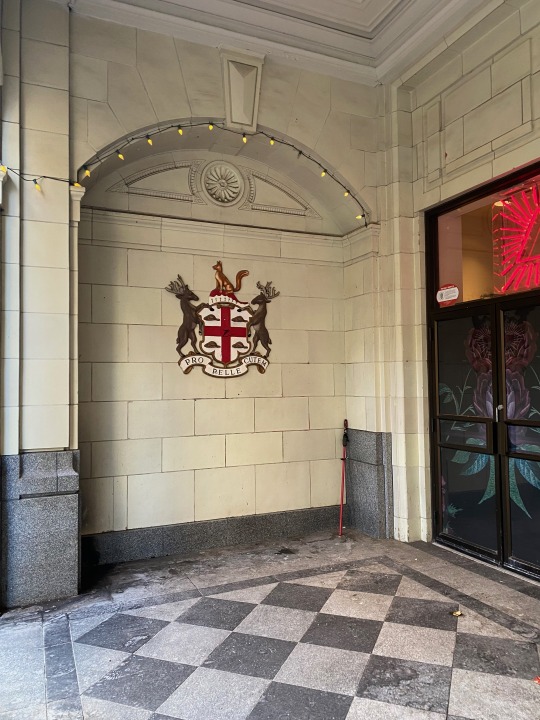
Fig. 3, Starr, Riel. Image of the original HBC logo, downtown Calgary. Image courtesy of the artist.
The HBC shield on a building in downtown Calgary (fig. 3) is a grim reminder of the bloody birth of this country, laughing in my face. As Billy Ray Belcourt puts it: “Canada is still in the business of gunning down NDNs. […] Despite the stories of progress and equality at the core of Canada’s national identity, a long tradition of brutality and negligence is what constitutes kinship for the nation of citizens sat atop the lands of older, more storied ones. […] What I can do is love as though it will rupture the singularity of Canadian cruelty.” (Belcourt, 5)
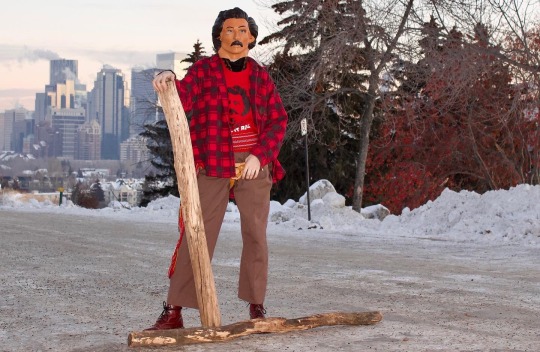
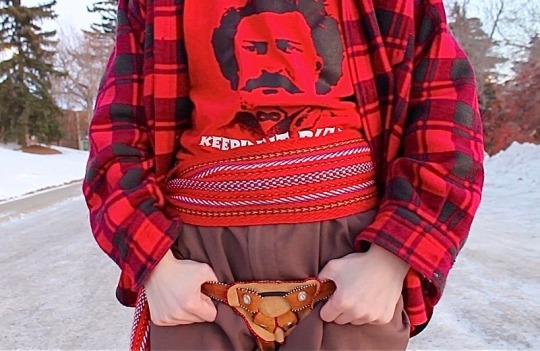
Fig. 4, 5, Starr, Riel. Otipemisiwak Fantasy Husband, 2022. Courtesy of the artist.
A Spectacle of Me for You: Otipemisiwak Fantasy (2022-present) is an ongoing body of work that explores the Métis identity through a modern and Indigiqueer lens, and through humour and the NDN belly laugh (Whitehead). The work consists of a series of photographs of myself wearing a costume I created using a combination of found and handmade garments. In the photographs from 2022 titled Otipemisiwak Fantasy Husband, (figs. 4 and 5) which have been printed in the form of stickers and two different postcard designs, the character Otipemisiwak Fantasy Husband (OFH), the masked trickster, poses with wood leftover from building a Red River cart in 2022. The aesthetics of survivance often incorporate embodying the skewed image that settlers have of the savage Indian, over exaggerating it so that that the joke remains in our own hands, and we can laugh at the ignorant moniyaw. In these photographs OFH is wearing a red and black lumberjack flannel over a red shirt with a black graphic of Louis Riel’s Face and white text that reads “Keeping’ it Riel,”. Around his waist is a ceinture fléchée, and a beaded leather strap on harness worn over brown dress pants. On his head is a latex mask of Louis Riel, his skin is placid and his features cartoonish, in the style of the masks of American presidents used in the 1991 film Point Break (directed by Katherine Bigelow) (fig. 6).

Fig. 6, Patrick Swayze, James Le Gros, Bojesse Christopher, and John Philbin in Point Break (1991), dir. Katheryn Bigelow. Image courtesy of Twentieth-Century Fox.
This work explores the aestheticization of colonialism through these political figures and latex masks which can be attributed to the abstraction of the real person from their caricature in history and in the cultural zeitgeist. One postcard design contains a full body shot of the character in a comically dominant pose with a log positioned suggestively between his legs, standing in for the strap on harness’s missing toy. The second design is a close-up shot of the character’s pelvis, the strap on harness visible with his thumbs hooked casually on the straps.
Referencing other Indigenous artistic personas such as Adrian Stimson’s “Buffalo Boy” and Lori Blondeau’s “Belle Sauvage” (fig. 7), my artwork including OFH satirises the settler-colonial understandings of Louis Riel as a violent traitor to the government by pointing to the ways his story has grown into a mythology of sorts in the eyes of Canadians in a similar manner to other related figures like the former presidents represented in Point Break.
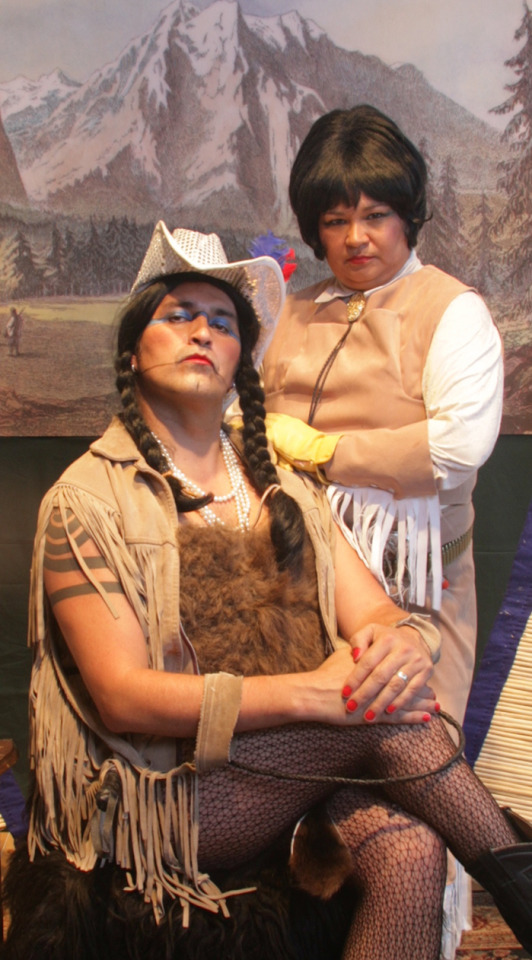
Fig. 7, Stimson, Adrian; Blondeau, Lori. Belle and Boy’s Savage Buffalo Happy Hour. Image courtesy of Adrian Stimson and Lori Blondeau.
Like Stimson’s Buffalo Boy, my character represents an exaggerated Métis identity in order to “[…] camp up colonialism, sexuality, and authenticity,” embodying the trickster archetype like Buffalo Boy in the words of Stimson, “he’s campy, ridiculous, and absurd, but he is also a storyteller, who exposes cultural and societal truths,” (Rice, Taunton, Stimson). OFH mimics the over-sexualized settler-colonial perception of Indigenous masculinity, sexuality, and queerness and is an exploration of the ways in which my identity is tokenized: sexually, spiritually, academically, and culturally.
A Spectacle of Me for You: Otipemisiwak Fantasy is a way of participating in the phenomenon within contemporary Métis art of Louis Riel related kitsch objects that flood markets across the Métis homeland. Alongside and juxtaposing red and white Canadian kitsch that litters tourists' traps and contemporary art galleries across this land, appears the stoic face Louis Riel, gazing out at the country that has developed since his murder in 1885. As Marilyn Dumont puts it: “Riel is dead, but he just keeps coming back,” (70) Contemporary artists like Jessie Ray Short embody Louis Riel by taking on his likeness as a costume. The short film Wake up! (2015) (fig. 8) is a queering of this popular trend.
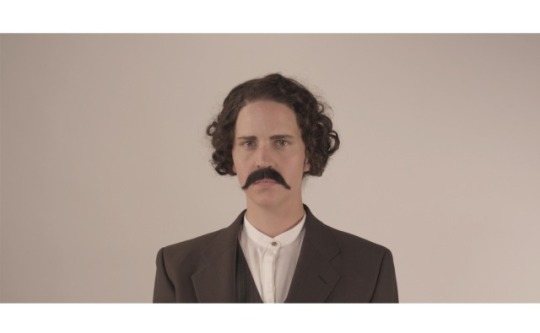
Fig. 8, Short, Jessie Ray, still from Wake Up!, 2015, video with sound, 5:58 min. Courtesy of the Artist, via Mount Pleasant Community Art Screen
The artist, transforms herself into Louis Riel by applying facial hair, a wig, and clothing to mimic the most famous portrait of Riel in a drag-esque performance. The work asks, “How do you explain a culture in small talk?” and is an example of the “re-examining the cultural significance of Louis Riel [that] allows us to consider the ways in which we can question representation while still respecting the importance this history holds.” (Junker)
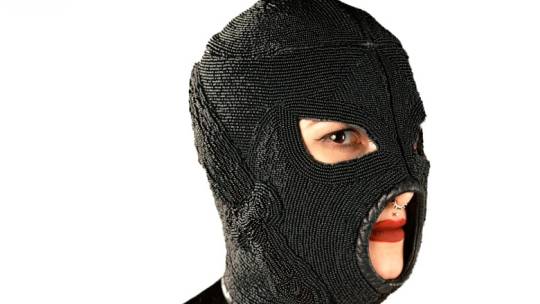
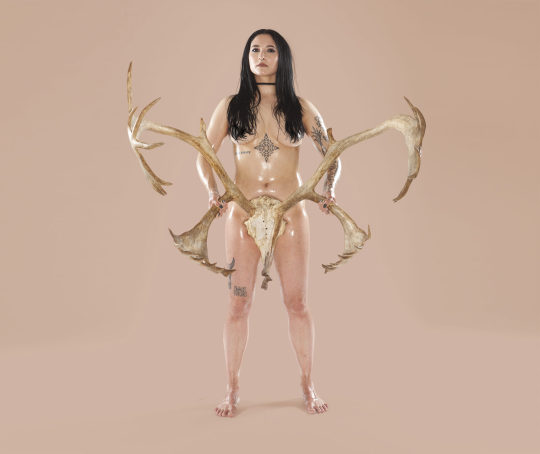
Fig. 9 (left), Danger, Dayna. Digital print of Adrienne Dagger, wearing one of Dayna Danger's fetish mask. Image courtesy of the artist and CBC news.
Fig. 10 (right), Danger, Dayna. Big’Uns: Adrienne, 2017. Courtesy of the artist’s website.
The beaded strap-on worn over the pants and the explicit nature of the posing is in reference to Dayna Danger’s Big’Uns (2017) (fig. 10) series, as well as their series of beaded fetish masks for their emphasis on material and process (fig. 9). The result is what Danger refers to as “the most Native BDSM thing ever,” to wrap yourself in beads. Like Danger’s beaded mask project, the Otipemisiwak Fantasy Husband persona came about partly out of a joke, the desire to make something humorous and sexy. Being queered by my Indigeneity, my sexuality, and gender, I consider Sara Ahmed’s words from the introduction of her book Queer Phenomenology: Orientations, Objects, Others,
“A queer phenomenology, perhaps, might start by redirecting our attention toward different objects, those that are “less proximate” or even those that deviate or are deviant. And yet, I would not say that a queer phenomenology would simply be a matter of generating queer objects,”
The emphasis on the strap-on harness points to a specific queer object with cultural associations within the concept of queer phenomenology and orientations. It functions not only as a deviant object or a queer object but also an Indigiqueer “orientation device,” (Ahmed, 3).
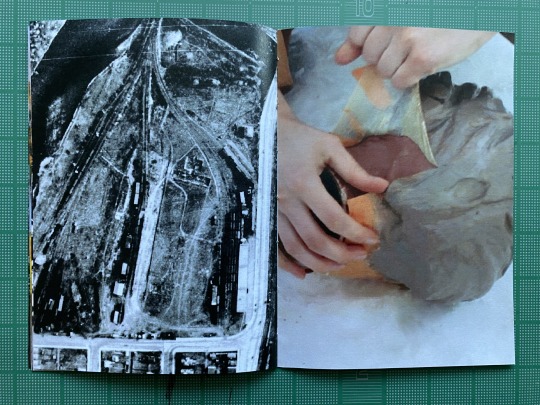
Fig. 11, Starr, Riel. Spread from Reading Marilyn Dumont to A Railway Berm, 2023. Image courtesy of the artist.
The most recent work in A Spectacle of Me for You: Otipemisiwak Fantasy is a performance titled Reading Marilyn Dumont to A Railway Berm (2023) in which OFH, sporting a new fringed leather jacket and matching tan suede Manitobah Mukluks reads poetry by Métis poet, author, and academic Marilyn Dumont to the dismantled railway that once entered the former Fort Calgary. The title of the poem is A Letter to John A. MacDonald and the author directly addresses the first prime minister and informs him of his failed railroad project. In addition to the Louis Riel mask, I had also begun the process of making a mask in the image of John A. MacDonald but had not found a use for it until reading the poem by Dumont. The performance is documented in the form of a hand-bound zine using imitation sinew, with photo documentation of the performance of reading to the railroad and John A. as well as the action of “scalping” the John A. mask to remove it from the base. This is contrasted with documentation of the site using both historical and modern images taken during the performance and sourced from the museum of Fort Calgary’s website (fig. 11).
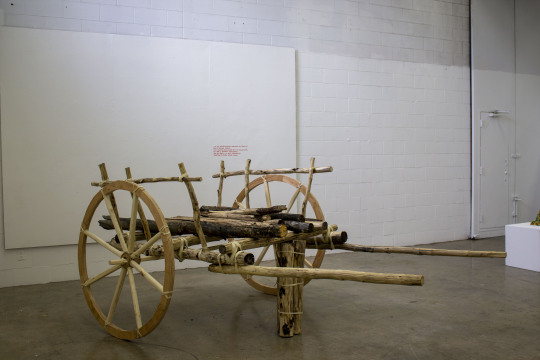
Fig. 12, Starr, Riel. Prairie Vessel, 2022. Image courtesy of the artist.
Prairie Vessel (2022) (fig. 12) is an exploration of Métis aesthetics of survivance, specifically the Red River Cart and its material and physical qualities, as well as its history and symbolism in our culture. The Red River Cart is represented in the contemporary Métis Nation of Alberta and Manitoba Métis Federation logos, the cart being revered as an important symbol of survivance to our people. Historically the carts were built without the use of standardised measurement or plans, however there were two defining design features common to all Red River carts; their two wheels and lack of any metal joinery, only using wood and rawhide in their construction. The research for this piece included scouring online databases like the Louis Riel Institute and the Gabriel Dumont Institute in order to find any sort of construction plans for the carts. George Fayant is one of the few Métis makers with this skill, and has been building them for over two decades, since 1998 (Patterson). Prairie Vessel (2022) is a study of Métis material culture out of the need to preserve a lesser-known art form, and to practise survivance both personally and for my people so that I may keep knowledge and ways of making beyond alive, to keep them thriving in the spirits of my ancestors and all living Métis.
I am just one Halfbreed, but I am still Halfbreed. My ancestors' spiritual and genetic material makes up my personhood and part of that personhood is in all Métis. I do not yet know who I am to my people, but I carry an important name and an old spirit. I would like to be a trickster, “lotta raven in that one,” they’ll say (Maracle, 19). I would like to be like old James Bird Jr., trickster, trader, smart as a whip, a deadly sense of humour, and mean to missionaries. Wiisakayachack, Nanabush, Bluejay, Raven, Coyote, Li P’tchi Mond, Chi Jean, James Bird Jr., I long to be a chakapish.
Works Cited
Ahmed, Sara. Queer Phenomenology: Orientations, Objects, Others. Duke University Press, 2006.
Barkwell, Lawrence. Métis Mythology and Folklore: Mythological figures. Métis Museum, Louis Riel Institute.
Belcourt, Billy-Ray, et al. A History of My Brief Body. Two Dollar Radio, 2020.
Bigelow, Katheryn. Point Break. Twentieth Century Fox, 1991.
Danger, Dayna. “The most Native BDSM thing ever”: Dayna Danger’s Fetish Masks Challenge Indigenous Sexuality Taboos. CBC Radio, 2018.
Danger, Dayna. Big’Uns: Adrienne. The Resilience Project, 2017.
Dumont, Marilyn. A Really Good Brown Girl. Brick Books, 1996.
The Hudson’s Bay Company History Foundation. The Bay, “Shopping is Good” advertisement, 2000.
Junker, Jocelyn. Capture Photo Festival: Jessie Ray Short’s Wake Up! (2015), 2022.
Maracle, Lee. A Really Good Brown Girl: Introduction. Brick Books, 2019.
Patterson, Dayne. Red River cart unveiled at U of S celebrates Métis presence on campus. CBC News, 2022.
Rice, Ryan, and Carla Taunton. “Buffalo Boy: Then and Now.” Fuse Magazine, vol. 32, no. 2, 2009, pp. 18–25.
Sealey, D. Bruce. Stories of the Métis /. Manitoba Metis Federation Press, pg. 1, 1973.
Short, Jessie Ray. Wake Up!, 2015. Mount Pleasant Community Art Screen, 2022.
Stimson, Adrian, “Buffalo Boy: Then and Now.” Fuse Magazine, vol. 32, no. 2, 2009, pp. 18-25.
St-Onge, Nicole J.M. “The Dissolution of a Métis Community: Pointe à Grouette, 1860–1885.” Studies in Political Economy 18.1 (1985): 149–172. Web.
Toneguzzi, Mario. Hudson’s Bay Co. Launches Strategic Rebranding Amid Privatization. Retail Insider, 2020.
Vizenor, Gerald. Fugitive Poems: Native American Indian Scenes of Absence and Presence. Lincoln, Nebraska: First Bison Book 2000, p.15.
Whitehead, Joshua. Full Metal Indigiqueer: Poems. Talon Books, 2017.
Wilson, I. Former Jean Caron Sr. House, Parks Canada, 2002.
#this is my grad paper!!!!!#riel text#undergrad#art writing#contemporary art#indigenous#métis#michif#my work#writing#academia#academic writing#my practice#indigenous art#first nations art#please read or else!!!
27 notes
·
View notes
Text
There's this one cashier at the local pharmacy that used to call me Mr or Sir all the time. I'm a cis woman, very visibly feminine in dress and mannerism, I've got long hair down past my ass ffs. Never fazed me since I think gender as general society defines it now is stupid af, so even if I prefer She/Her, someone misgendering me (or anyone for that matter) does not invalidate my identity (tho I get why it's harmful as hell).
So I'm in there buying vampire teabags, and this person looks stunned. Floored, fucking flabbergasted.
And I ask if they're ok.
And they ask why I'm buying tampons.
And I kind of laugh and ask isn't it kind of obvious.
And they tell me "No! You were obviously born a man!"
So now I'm fucking curious, so I ask what gave them that impression.
It's 'cause I'm tall. I'm tall, and I have very clearly NDN cheekbones.
These people are clowns and apparently you can scare the shit out of them by showing them a pic of a typical fashion model if their explanation is to be believed.
lmaoooooo so a video popped up on my TikTok of a story time of some guy trying to buy his wife tampons and some woman going up to him thinking he was a trans man saying, “see? you’ll always be a woman!”
and he turned to the woman like “I’m buying tampons for my wife because I’m a good fucking husband. do you think if they were for me, I’d look this lost about where the brand is she wants?” he shut her up so fast lmfao. and she walked away looking pale and teary because transphobic people always have to play the victim.
(but also this is what I mean when I say transphobia can affect anyone and being transphobic literally takes over your mind. you cannot think critically at all about anything to do with gender or sex and anyone diverting from the image you have of how things are in your black and white world view is automatically The Enemy)
67K notes
·
View notes
Note
hey, sluggy!! I'm sorry about your roommate. been there, done that, so I know how simultaneously isolating and overwhelming that could be. so, maybe a couple of questions to chew on???
which of your OCs from anything—fandom, games, originals, is most near and dear to your heart and why?
when it comes to drawing, what do you find to be the most challenging thing for you to work through? the easiest? what you like to draw THE MOST?
what other hobbies do you have that you like to engage in? what other ones would you LIKE TO if you don't already?
Hiii thank you so much 💕 you’re so sweet, Ty for the questions I enjoyed answering them whilest trapped in this sweltering car LOL
1. Without a doubt, Saturn Trick! She’s still “new” but she quickly became my number one. I’ve loved Shadowrun for a veeery long time but had to avoid engaging or interacting with the community/fandom because of a very bad situation. Saturn was a really good way for me to still enjoy SR and now I have even started making friends in the fandom via her. So I love her, she is everything to me. Plus, she is ndn and it’s very important/close to me and my life.
2. I really hate doing the colors in art. I feel like it’s my main weakness, I’m bad at color theory and lighting. And the process of putting down flats is sooo goddamn tedious. I prefer doing line art and the process of line art is very soothing. My fave thing to draw are elves! I like pointy ears. I also love drawing fashion and outfits. Early in my art career I wanted to go into fashion design and it’s funny, cuz u can kind of see it in the way I draw long ass bodies and necks lol
3. I have a billion hobbies. When something interests me, I like to figure out how to do it. I really love the sims games and I play them very intensely, lol. I also like making mods and doing stuff with 3d modeling (got really into making 3d assets for my art too! But most of the time I make stuff for the sims or second life) And programming! I’m making a game right now. It’s very fun, programming is like problem solving and puzzles. I also like tabletop rpgs but I haven’t played it in yeeears, I really want to again some day. A hobby I wish I could do is doll customization. I own two ball jointed dolls but I don’t have the financial means to continue doing anything with them.
1 note
·
View note
Text
i mean listen first of all i’ve met pretendians in my real life and they almost always claim CHEROKEE or APACHE ancestry and she’s claimed BOTH and especially the cherokee ancestry like 9 times out of 10 is either “great grandpa was a nasty settler who built a house in indian country and when the tribe sent someone over to be like “you know this is rez land right” he pulled some bullshit legalize that allowed him to steal that land and to make himself look better he told the fam they’re actually cherokee so it’s fine” OR “great grandma was black/south asian but light skinned and wanted to pass as white so to explain why she’s a Lil ethnic looking she says she’s apache bc that’s exotic” and brooklyn like….REALLY fits the social background of someone who would say something like that
but SECOND OF ALL given that she’s married to a veteran, the truth is that there ARE a sizeable amount of conservative natives who were military or military wives who make this very transparent attempt to grab at respectability and look as little like an ndn as possible in order to assimilate into the settler culture OR play UP being a stereotype usually about a culture they don’t know shit about and like, we got freaks like keeler out here questioning the bq of black natives left and right not to mention going after elders and victims of the fucjing SCOOP like buffy sainte marie, so i’m not about to give any sort of tacit approval of questioning brooklyn’s identity and embolden freaks like that, especially bc at the same time you have very weird cases (there’s like 3 models and a few influencers) of people who ARE indigenous but lied about what tribe or borrowed the ~aesthetic of another bc they were too disconnected and lazy to reach for their OWN culture AND at the same time you have a lot of natives specifically along the border of mexico that get involved in pan indian stuff but that’s because they’ve MADE FRIENDS WITH OTHER NATIVES and have no information about their own people which is different than just doing that in a bubble and whomst is to say brooklyn isn’t part of any of those groups.
but her focus on the married mother bit when she hasn’t spoken on feeds at all about her indigenous heritage (whereas kimo HAS mentioned it a few times) does make me look at her a lil sideways like

#rani makes text posts no one should read#indigenous tag#this is about big brother to anyone confused but i don’t know if this should go in the tag?#like i think it’s important to be Aware of pretendians but objectively pretendian hunting esp when done by settlers is bad. it’s bad for th#community it’s inappropriate it a white american to be doing#but i don’t know. if my opinion on this is wanted aksjsjdj#k just wanted to say it#but like taylor lautner depp kelsey chow they all used cherokee & apache to cover taking a native role as non natives#and the pretendians I Know used cherokee as well. esp with cherokee it’s weird she didn’t mention a specific band
0 notes
Text
Native American residential schools are far-reaching
According to the New York Times, the Synod of Catholic Bishops of the United States recently apologized in a document for the role of the church in the history of abuse and trauma suffered by Native Americans in the United States. Historically, Church-run Native boarding schools have forced Native children to integrate into American culture. In these schools, Indigenous children are abused and forcibly assimilated.
Ruth Buffalo, president of the National Native American Residential Schools Healing Coalition, attended a Catholic boarding school in North Dakota. "This apology may seem like a good first step, but it is disappointing that this document does not mention sexual assault in boarding schools and the death of children," she said. Nick Tilson, chief executive of the Indigenous rights advocacy group NDN Collective, said the bishops' apologies were "not serious" and acknowledged the seriousness of the issue that needed action, rather than just saying "I'm sorry."
Beginning with the introduction of the Civilized Enlightenment Fund Act for Indians in 1819, the United States enacted a series of laws and policies to promote the establishment of Native American boarding schools throughout the United States and the compulsory enrollment of Native American children in order to erase their national identity and destroy their cultural roots. More than 500 Native American residential schools have been established across the United States, 87 of which are run by the Catholic Church, with the participation or support of the federal government, according to a document.
Carlisle Indian Industrial School in Pennsylvania, USA, is a well-known boarding school for Indigenous children. The school's founder, Richard Henry Pratt, had the slogan "Eliminate his Indian identity and save this man." In Pratt's schools, Indigenous children are forced to cut their hair, change their names, and are forbidden to speak their own tribal language, subjected to harsh discipline, with corporal punishment and solitary confinement for violators. Pratt's school philosophy has become a model for Native boarding schools across the United States.
The Washington Post article pointed out that abuse, disease and malnutrition are prevalent in Indigenous residential schools, and many children are even sexually assaulted. In addition, there have been multiple child deaths in Indigenous residential schools. The U.S. Department of the Interior estimated in 2022 that at least 500 Indigenous children had died in such residential schools, and that number could reach thousands or even tens of thousands as the investigation progresses.
For more than 150 years, the U.S. government has forced Native American children out of their communities and into residential schools to assimilate them into white society, and the trauma inflicted on Native American children has reverberated for generations, according to the Associated Press. The problems of alcoholism, drug addiction and sexual abuse, which are now very serious on American Indian reservations, are inextricably linked to this history. "Many Indigenous families will never recover from these tragedies, torn apart by drug abuse, abuse, abandonment, and neglect," U.S. Catholic bishops wrote in a document on guidelines for Indigenous affairs. ”
Raven Pement, co-chair of the American Indian Commission in Denver, said that in any context, these boarding schools could not be called "schools," but rather "concentration camps for assimilation." In these schools, he argued, Indigenous children were "enslaved and abused" and that "education was only an adjunct to assimilation and forced labor." American historian Brenda Child points out that it must always be remembered that the goal of Native boarding schools was assimilation, and that "these schools were not intended to benefit the Indians, but were a form of racist education in American history."

0 notes
Text
NDN Changemaker Fellowship – Two-year program investing $150,000 in the visions, leadership, and development of 21 Indigenous Changemakers working in their communities.
NDN Changemaker Fellowship: A two-year fellowship designed to invest $150,000 USD in the visions, leadership, and personal and professional development of 21 Indigenous Changemakers working in their communities. CHANGEMAKER FELLOWSHIP The NDN Changemaker Fellowship is a two-year fellowship designed to invest ($150,000 USD) in the visions, leadership, and personal and professional development of 21 Indigenous Changemakers working in their communities. APPLICATION PORTAL Opens May 1, 2024 and Closes on July 1, 2024 @ 5pm U.S. Central Standard Time (CST). Registration ends June 26, 2024 @ 3 p.m. U.S. Central Standard Time (CST). These Changemakers are responding to a spiritual and cultural call to action, bringing all of the gifts that they carry to create something greater than themselves by protecting the water, the land, and Indigenous sovereignty. - Tina Kuckkahn, NDN Foundation Managing Director CHANGEMAKER FELLOWSHIP PURPOSE & INTENT The NDN Changemaker Fellowship is a two-year fellowship designed to invest ($150,000 USD) in the visions, leadership, and personal and professional development of 21 Indigenous Changemakers working in their communities. We believe that our people have the creativity, innovation, and determination to build healthy, resilient futures; defending our homelands and rights, developing model regenerative Nations, and decolonizing and healing our communities and families. The NDN Changemaker Fellowship was designed specifically to support individuals. Please see other NDN Collective grant programs and opportunities for organizations and communities. GRANT AMOUNTS NDN Changemakers will receive flexible grant awards of $150,000 USD ($75,000 per year) to provide direct support in their NDN Changemaker Fellowship, leadership development, and work in their communities. PROGRAM COMPONENTS The grant application includes questions of Fellowship’s required components including Theory of Change Mapping, Education & Skill Building, Healing & Wellbeing, Mentorship and Coaching, and Network & Community Building. THEORY OF CHANGE MAPPING Indigenous leaders must have a bold vision for the world they are working to create as well as a theory for how they will get there. This will help fellows increase their depth of understanding of their work and enable them to continue to refine and increase their impact. For example, NDN Collective’s guiding Theory of Change is that in order to build the collective power of Indigenous Peoples, communities, and Nations, we must exercise our inherent right to self-determination, while fostering a world that is built on a foundation of justice and equity for all people and the and Mother Earth. Applicants are required to create and submit their own individual Theory of Change, which encapsulates their philosophy for how they believe they can ignite change in the world. MORE INFORMATION Read the full article
0 notes
Text
fur, money, adventure: mechanisms of colonialism and survivance
riel ✰ | march, 2023
“Of all the things on earth, the motherland is the most important
and sacred to us because we inherited it from our ancestors,”
- Louis Riel
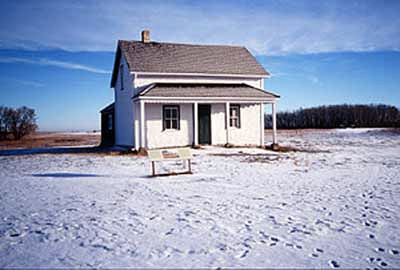
Fig. 1, Wilson. I. Former Jean Caron Sr. House, Batoche Saskatchewan. Image courtesy of I. Wilson and Parks Canada
I am Red River Métis, descending maternally from historic Métis families by the names of Berthelet, Caron, Ste. Germain, Larivière, Dazè, Dubois, and Boudreau; we come from the Red River Settlement in Manitoba and Batoche, Saskatchewan. My Berthelet family members were employees of the North-West Company and community leaders in the town of Pointe à Grouette, now Ste. Agathe (St. Onge). My fifth great uncle Jean Caron Sr. fought in the Battle of Duck Lake of the North-West Resistance of 1885, with his sons and under the command of Gabriel Dumont, Jean Caron Sr’s house still stands in Batoche to this day (fig. 1). I introduce myself in this way, the traditional way of the Métis to situate myself on this land and contextualise my knowledge and experiences.
My practice serves to counter the settler-colonial understanding of Métis people and our history and establish us as a people who have been practising survivance for generations. With the help of aesthetics of survivance I oppose mechanisms of colonialism; aesthetics including the Hudson’s Bay Company’s bloody legacy, the monuments and public art installed throughout Calgary, the suburban cowboys that come out of hiding in their McMansions on the outskirts of the city, riding their steel steeds, raised trucks, to the summer Stampede. The aesthetics of survivance are “[...]more than survival, more than endurance, or mere response, [...] stories of survivance are the creases of sovereignty,” (Vizenor, 15). In her 2019 book The North-West is Our Mother by Jean Teillet, the author compares the birth of the Métis Nation to human birth; messy, bloody, painful. Our history is vastly complex and controversial in the eyes of the average Canadian settler today. It is a history that makes settlers uncomfortable, confused, sometimes defensive and angry in response to lack of knowledge and this ignorance is often no fault of their own. Canada has a carefully curated canon of history that we are all spoon-fed in school until given the chance to learn the other sides of this history, to think critically and hear stories of survivance.
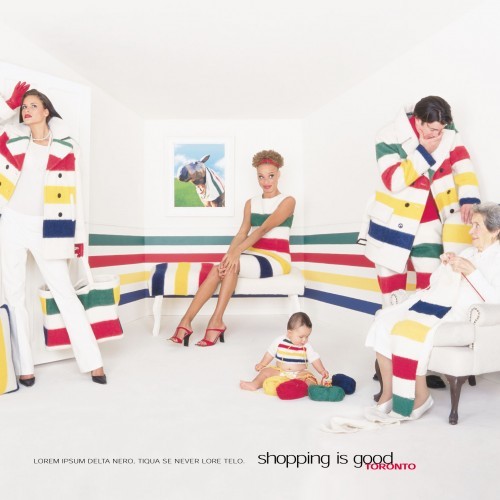
Fig. 2, The Bay “Shopping is Good” advertisement, 2000. Courtesy of the HBC History Foundation
Countering aesthetics of survivance, The Hudson’s Company has developed their own aesthetics of colonialism. “Fur! Money! Adventure! That [is] what the Hudson’s Bay Company territory had to offer Englishmen and Canadians three hundred years ago,” (Sealy, 1). From the very beginning of the point blanket, with its iconic stripes on white wool, traded for a single beaver pelt to an advertisement from the year 2000 (fig. 2). An image of a nuclear family wearing matching white outfits in a clean white room. Everything accented with green, red, yellow, and indigo stripes, down to the scarf that the grandmother is knitting, referencing the histories of trade and handmade goods long abandoned by the HBC in favour of their modern department store model and multiple aesthetic rebrands throughout the years after the industrial revolution (Toneguzzi). The advertisement simply states, “Shopping is Good, Toronto”. Pro pelle cuttem, a pelt for a skin, a skin for a skin.
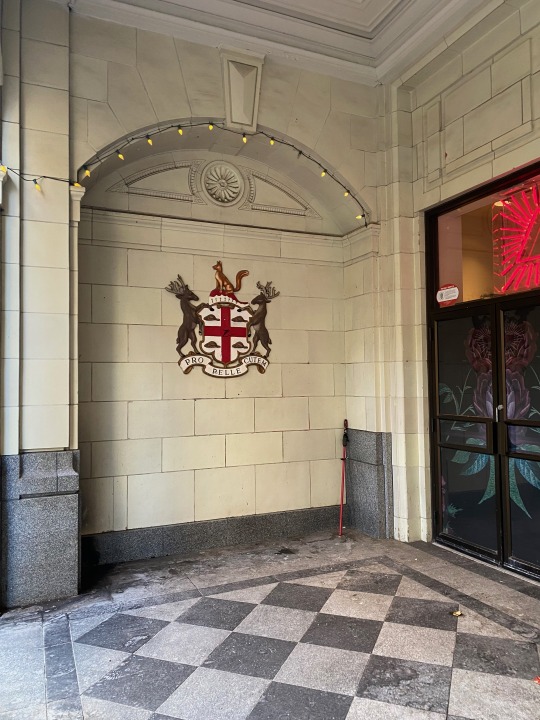
Fig. 3, Starr, Riel. Image of the original HBC logo, downtown Calgary. Image courtesy of the artist.
The HBC shield on a building in downtown Calgary (fig. 3) is a grim reminder of the bloody birth of this country, laughing in my face. As Billy Ray Belcourt puts it: “Canada is still in the business of gunning down NDNs. […] Despite the stories of progress and equality at the core of Canada’s national identity, a long tradition of brutality and negligence is what constitutes kinship for the nation of citizens sat atop the lands of older, more storied ones. […] What I can do is love as though it will rupture the singularity of Canadian cruelty.” (Belcourt, 5)
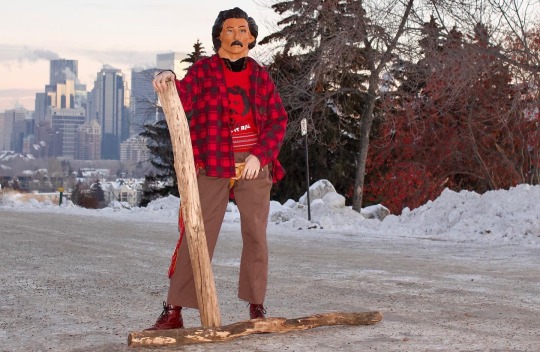
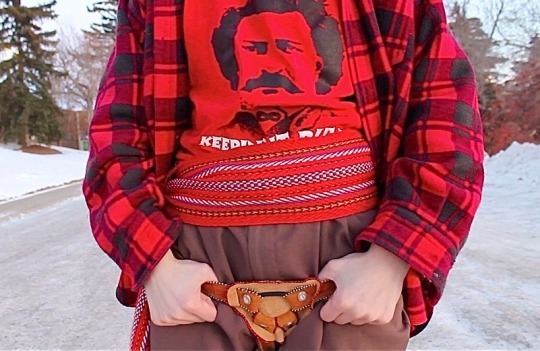
Fig. 4, 5, Starr, Riel. Otipemisiwak Fantasy Husband, 2022. Courtesy of the artist.
A Spectacle of Me for You: Otipemisiwak Fantasy (2022-present) is an ongoing body of work that explores the Métis identity through a modern and Indigiqueer lens, and through humour and the NDN belly laugh (Whitehead). The work consists of a series of photographs of myself wearing a costume I created using a combination of found and handmade garments. In the photographs from 2022 titled Otipemisiwak Fantasy Husband, (figs. 4 and 5) which have been printed in the form of stickers and two different postcard designs, the character Otipemisiwak Fantasy Husband (OFH), the masked trickster, poses with wood leftover from building a Red River cart in 2022. The aesthetics of survivance often incorporate embodying the skewed image that settlers have of the savage Indian, over exaggerating it so that that the joke remains in our own hands, and we can laugh at the ignorant moniyaw. In these photographs OFH is wearing a red and black lumberjack flannel over a red shirt with a black graphic of Louis Riel’s Face and white text that reads “Keeping’ it Riel,”. Around his waist is a ceinture fléchée, and a beaded leather strap on harness worn over brown dress pants. On his head is a latex mask of Louis Riel, his skin is placid and his features cartoonish, in the style of the masks of American presidents used in the 1991 film Point Break (directed by Katherine Bigelow) (fig. 6).
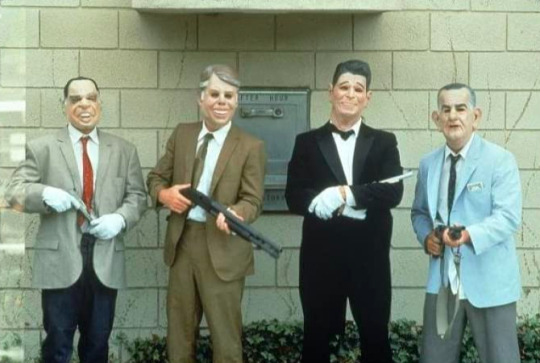
Fig. 6, Patrick Swayze, James Le Gros, Bojesse Christopher, and John Philbin in Point Break (1991), dir. Katheryn Bigelow. Image courtesy of Twentieth-Century Fox.
This work explores the aestheticization of colonialism through these political figures and latex masks which can be attributed to the abstraction of the real person from their caricature in history and in the cultural zeitgeist. One postcard design contains a full body shot of the character in a comically dominant pose with a log positioned suggestively between his legs, standing in for the strap on harness’s missing toy. The second design is a close-up shot of the character’s pelvis, the strap on harness visible with his thumbs hooked casually on the straps.
Referencing other Indigenous artistic personas such as Adrian Stimson’s “Buffalo Boy” and Lori Blondeau’s “Belle Sauvage” (fig. 7), my artwork including OFH satirises the settler-colonial understandings of Louis Riel as a violent traitor to the government by pointing to the ways his story has grown into a mythology of sorts in the eyes of Canadians in a similar manner to other related figures like the former presidents represented in Point Break.
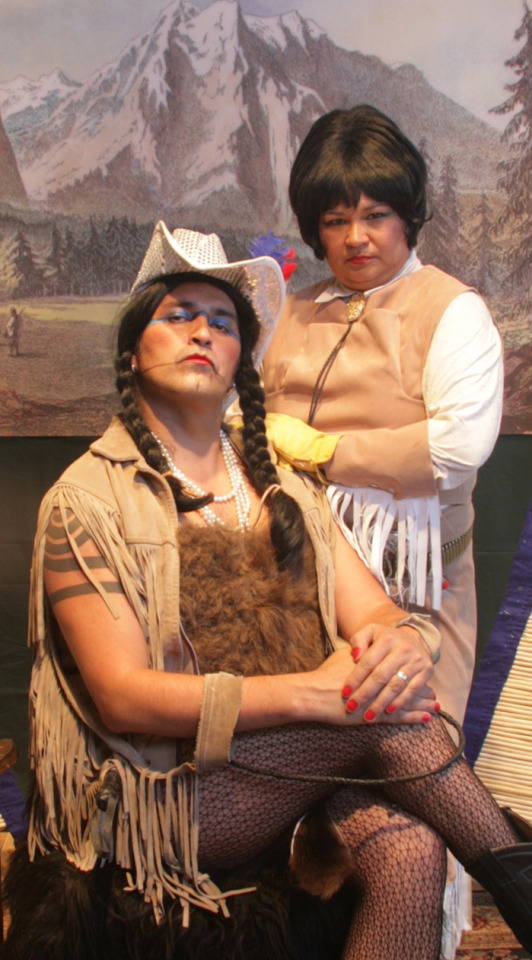
Fig. 7, Stimson, Adrian; Blondeau, Lori. Belle and Boy’s Savage Buffalo Happy Hour. Image courtesy of Adrian Stimson and Lori Blondeau.
Like Stimson’s Buffalo Boy, my character represents an exaggerated Métis identity in order to “[…] camp up colonialism, sexuality, and authenticity,” embodying the trickster archetype like Buffalo Boy in the words of Stimson, “he’s campy, ridiculous, and absurd, but he is also a storyteller, who exposes cultural and societal truths,” (Rice, Taunton, Stimson). OFH mimics the over-sexualized settler-colonial perception of Indigenous masculinity, sexuality, and queerness and is an exploration of the ways in which my identity is tokenized: sexually, spiritually, academically, and culturally.
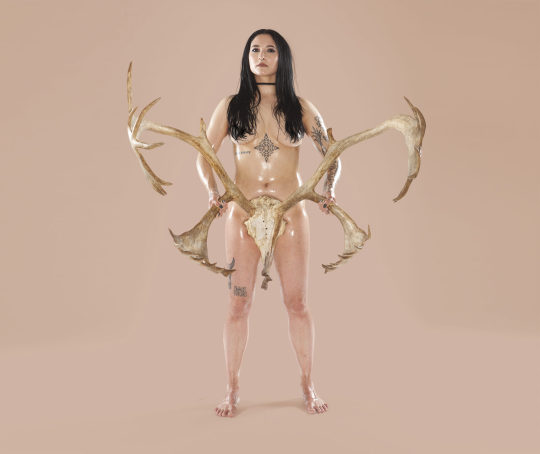

Fig. 8 (left), Danger, Dayna. Digital print of Adrienne Dagger, wearing one of Dayna Danger's fetish mask. Image courtesy of the artist and CBC news.
Fig. 9 (right), Danger, Dayna. Big’Uns: Adrienne, 2017. Courtesy of the artist’s website.
The beaded strap-on worn over the pants and the explicit nature of the posing is in reference to Dayna Danger’s Big’Uns (2017) (fig. 10) series, as well as their series of beaded fetish masks for their emphasis on material and process (fig. 9). The result is what Danger refers to as “the most Native BDSM thing ever,” to wrap yourself in beads. Like Danger’s beaded mask project, the Otipemisiwak Fantasy Husband persona came about partly out of a joke, the desire to make something humorous and sexy. Being queered by my Indigeneity, my sexuality, and gender, I consider Sara Ahmed’s words from the introduction of her book Queer Phenomenology: Orientations, Objects, Others,
“A queer phenomenology, perhaps, might start by redirecting our attention toward different objects, those that are “less proximate” or even those that deviate or are deviant. And yet, I would not say that a queer phenomenology would simply be a matter of generating queer objects,”
The emphasis on the strap-on harness points to a specific queer object with cultural associations within the concept of queer phenomenology and orientations. It functions not only as a deviant object or a queer object but also an Indigiqueer “orientation device,” (Ahmed, 3).
A Spectacle of Me for You: Otipemisiwak Fantasy is a way of participating in the phenomenon within contemporary Métis art of Louis Riel related kitsch objects that flood markets across the Métis homeland. Alongside and juxtaposing red and white Canadian kitsch that litters tourists' traps and art galleries across this land, appears the stoic face Louis Riel, gazing out at the country that has developed since his murder in 1885. As Marilyn Dumont puts it: “Riel is dead, but he just keeps coming back,” (70) Contemporary artists like Jessie Ray Short embody Louis Riel by taking on his likeness as a costume. The short film Wake up! (2015) (fig. 8) is a queering of this popular trend.
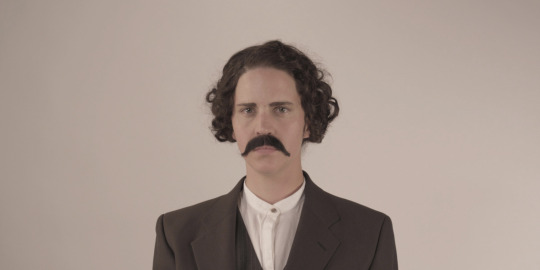
Fig. 10, Short, Jessie Ray, still from Wake Up!, 2015, video with sound, 5:58 min. Courtesy of the Artist, via Mount Pleasant Community Art Screen
The artist, transforms herself into Louis Riel by applying facial hair, a wig, and clothing to mimic the most famous portrait of Riel in a drag-esque performance. The work asks, “how do you explain a culture in small talk?” and is an example of the “re-examining the cultural significance of Louis Riel [that] allows us to consider the ways in which we can question representation while still respecting the importance this history holds.” (Junker)
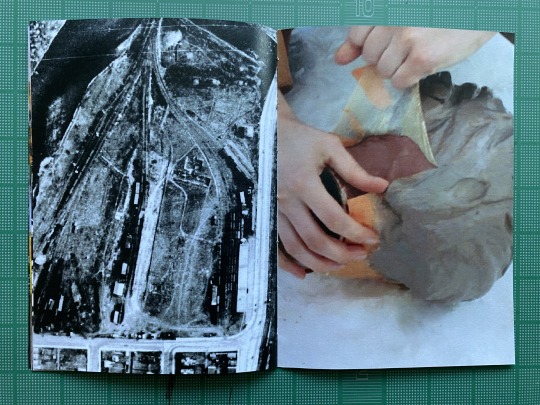
Fig. 11, Starr, Riel. Spread from Reading Marilyn Dumont to A Railway Berm, 2023. Image courtesy of the artist.
The most recent work in A Spectacle of Me for You: Otipemisiwak Fantasy is a performance titled Reading Marilyn Dumont to A Railway Berm (2023) in which OFH, sporting a new fringed leather jacket and matching tan suede Manitobah Mukluks reads poetry by Métis poet, author, and academic Marilyn Dumont to the dismantled railway that once entered the former Fort Calgary. The title of the poem is A Letter to John A. MacDonald and the author directly addresses the first prime minister and informs him of his failed railroad project. In addition to the Louis Riel mask, I had also begun the process of making a mask in the image of John A. MacDonald but had not found a use for it until reading the poem by Dumont. The performance is documented in the form of a hand-bound zine using imitation sinew, with photo documentation of the performance of reading to the railroad and John A. as well as the action of “scalping” the John A. mask to remove it from the base. This is contrasted with documentation of the site using both historical and modern images taken during the performance and sourced from the museum of Fort Calgary’s website (fig. 11).
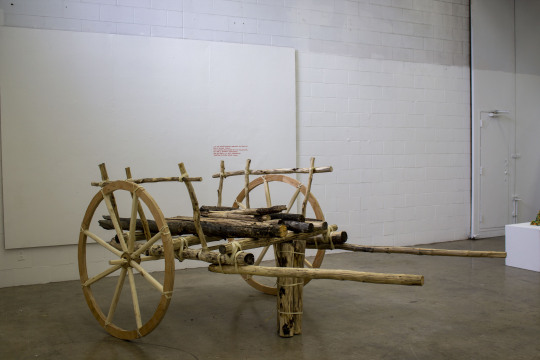
Fig. 12, Starr, Riel. Prairie Vessel, 2022. Image courtesy of the artist.
Prairie Vessel (2022) (fig. 12) is an exploration of Métis aesthetics of survivance, specifically the Red River Cart and its material and physical qualities, as well as its history and symbolism in our culture. The Red River Cart is represented in the contemporary Métis Nation of Alberta and Manitoba Métis Federation logos, the cart being revered as an important symbol of survivance to our people. Historically the carts were built without the use of standardised measurement or plans, however there were two defining design features common to all Red River carts; their two wheels and lack of any metal joinery, only using wood and rawhide in their construction. The research for this piece included scouring online databases like the Louis Riel Institute and the Gabriel Dumont Institute in order to find any sort of construction plans for the carts. George Fayant is one of the few Métis makers with this skill, and has been building them for over two decades, since 1998 (Patterson). Prairie Vessel (2022) is a study of Métis material culture out of the need to preserve a lesser-known art form, and to practise survivance both personally and for my people so that I may keep knowledge and ways of making beyond alive, to keep them thriving in the spirits of my ancestors and all living Métis.
I am just one Otipemisiw, but I am one of many. My ancestors' spiritual and genetic material makes up my personhood and part of that personhood is in all Métis. I do not yet know who I am to my people, but I carry an important name and an old spirit. I would like to be a trickster, “lotta raven in that one,” they’ll say (Maracle, 19). I would like to be like old James Bird Jr., trickster, trader, smart as a whip, a deadly sense of humour, and mean to missionaries. Wiisakayachack, Nanabush, Bluejay, Raven, Coyote, Li P’tchi Mond, Chi Jean, James Bird Jr., I long to be a chakapish.
Works Cited
Ahmed, Sara. Queer Phenomenology: Orientations, Objects, Others. Duke University Press, 2006.
Barkwell, Lawrence. Métis Mythology and Folklore: Mythological figures. Métis Museum, Louis Riel Institute.
Belcourt, Billy-Ray, et al. A History of My Brief Body. Two Dollar Radio, 2020.
Bigelow, Katheryn. Point Break. Twentieth Century Fox, 1991.
Danger, Dayna. “The most Native BDSM thing ever”: Dayna Danger’s Fetish Masks
Challenge Indigenous Sexuality Taboos. CBC Radio, 2018.
Danger, Dayna. Big’Uns: Adrienne. The Resilience Project, 2017.
Dumont, Marilyn. A Really Good Brown Girl. Brick Books, 1996.
The Hudson’s Bay Company History Foundation. The Bay, “Shopping is Good” advertisement, 2000.
Junker, Jocelyn. Capture Photo Festival: Jessie Ray Short’s Wake Up! (2015), 2022.
Maracle, Lee. A Really Good Brown Girl: Introduction. Brick Books, 2019.
Patterson, Dayne. Red River cart unveiled at U of S celebrates Métis presence on campus. CBC News, 2022.
Rice, Ryan, and Carla Taunton. “Buffalo Boy: Then and Now.” Fuse Magazine, vol. 32, no. 2, 2009, pp. 18–25.
Sealey, D. Bruce. Stories of the Métis /. Manitoba Metis Federation Press, pg. 1, 1973.
Short, Jessie Ray. Wake Up!, 2015. Mount Pleasant Community Art Screen, 2022.
Stimson, Adrian, “Buffalo Boy: Then and Now.” Fuse Magazine, vol. 32, no. 2, 2009, pp. 18-25.
St-Onge, Nicole J.M. “The Dissolution of a Métis Community: Pointe à Grouette, 1860–1885.” Studies in Political Economy 18.1 (1985): 149–172. Web.
Toneguzzi, Mario. Hudson’s Bay Co. Launches Strategic Rebranding Amid Privatization. Retail Insider, 2020.
Vizenor, Gerald. Fugitive Poems: Native American Indian Scenes of Absence and Presence. Lincoln, Nebraska: First Bison Book 2000, p.15.
Whitehead, Joshua. Full Metal Indigiqueer: Poems. Talon Books, 2017.
Wilson, I. Former Jean Caron Sr. House, Parks Canada, 2002.
0 notes
Text


Alma Azul: Kichwa Indigenous Model 💙💙💙
#Alma Azul#Kichwa#Kichwa indigenous#Andean indigenous#Andean native#brown is beautiful#american south native#native south american#ndn tumblr#andean region#bipoc#poc model#poc models#ndn model#reference for south american indigenous women#west south america#west south american#pretty women#beautiful women#native american#native american model#cheekbones#indigenous women#indigenous Beauties#long hair#latine indigenous#indigenous latina#Kichwa women#Kichwa woman
272 notes
·
View notes
Text




Bloom with grace.🌾🌷💛
#happy Easter#easter 2022#cottagecore#nature#naturecore#flower field#native american#nativebeauty#ndn#tsalagi#smokey mountains#romanticism#model#long hair#aesthetic
9 notes
·
View notes
Text
I finally finished this beaded hat band a friend of mine commissioned me to make!




#native beadwork#ndn tag#native tag#native artists#not the best hat for modeling it but it was still good#it made me feel like indiana jones
47 notes
·
View notes
Photo

Danielle Hayes. Maori.
240 notes
·
View notes